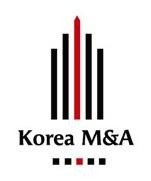| 일 | 월 | 화 | 수 | 목 | 금 | 토 |
|---|---|---|---|---|---|---|
| 1 | 2 | |||||
| 3 | 4 | 5 | 6 | 7 | 8 | 9 |
| 10 | 11 | 12 | 13 | 14 | 15 | 16 |
| 17 | 18 | 19 | 20 | 21 | 22 | 23 |
| 24 | 25 | 26 | 27 | 28 | 29 | 30 |
- PEF
- M&A
- Bank
- LOTTE
- private equity
- cgi korea
- Korea
- Investment
- China
- sk
- Malaysia
- China Construction Bank
- Japan
- CA
- hong kong
- buyout
- Confidential Agreement
- case study
- capital gate
- Merger
- nda
- Letter of intent
- acquisition
- OTCBB
- Acquistion
- taiwan
- LOI
- Korea M&A
- Japan Tobacco
- securities
- Today
- Total
Korea M&A Corporation
Reverse Merger with US Public Companies 본문
Reverse Merger with US Public Companies – Case Study
Typically, a reverse merger is a merger between a private company and a publicly traded company. The public company issues stocks to the shareholders of the private company to acquire the ownership of the private company. The amount of the shares received by the shareholders of the private company enable them to become the majority shareholders of the merged company. The shareholders of the private company take control of the merged company at the closing of the merger transaction.
The following are two typical cases of reverse mergers in which K & J Consulting, Ltd. was involved. These cases illustrate how a reverse merger is done.
Case 1:
Private Company: |
A Chinese software company |
Shares Outstanding: |
1 million, owned by 4 founders |
|
Merger Objective: |
Through a reverse merger, become a |
|
|
|
Public Company: |
A |
Shares Outstanding: |
25 Million |
Merger Objective: |
Hoping that the stock price will go up after the merger, and therefore maximizing the shareholder value for the current shareholders. |
After signing a Letter of Intent (LOI), the public company effected a
The name and the stock symbol of the public company were changed to reflect the business of the private company.
Case 2:
Private Company: |
A Chinese Digital Signal Processing company |
Ownership structure: |
The company had one majority owner, the rest was owned by several officers and a group of private investors |
|
Merger Objective: |
Through a reverse merger, become a |
|
|
|
Public Company: |
A |
Shares Outstanding: |
138,096,833 |
Merger Objective: |
Hoping that the stock price will go up after the merger, and therefore maximizing the shareholder value for the current shareholders. |
Before the merger, the public company effected a 200:1 reverse split, reducing the shares outstanding to 690,484. At the closing, the public company issued 12 million shares to the shareholders of the private company. The directors and officers of the public company resigned and the five directors of the private company became the new directors of the public company.
In a separate transaction, a group of investors paid $250,000 to purchase stocks from the former majority owners of the public company after the closing.
The name and the stock symbol of the public company were changed to reflect the business of the private company.
